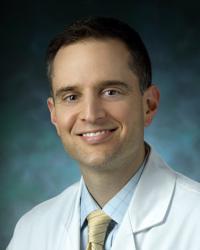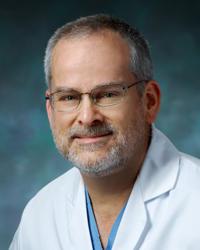-
Matthew Czarny MD

- Assistant Professor of Medicine
Primary Location: Johns Hopkins Bayview Medical Center, Baltimore, MD
-
Rani Hasan MD MHS

- Director, Interventional Cardiology Fellowship Program
- Assistant Professor of Medicine
Primary Location: Johns Hopkins Outpatient Center, Baltimore, MD
-
Peter V. Johnston MD

- Medical Director, Cardiac Catheterization Laboratory, Johns Hopkins Howard County Medical Center
- Assistant Professor of Medicine
Primary Location: Johns Hopkins Bayview Medical Center, Baltimore, MD
-
Julie M. Miller MD

- Associate Professor of Medicine
Primary Location: Johns Hopkins Endoscopy & Surgery Center - Columbia, Columbia, MD
-
Jon R. Resar MD

- Director, Adult Cardiac Catheterization Laboratory
- Professor of Medicine
Primary Location: Johns Hopkins Outpatient Center, Baltimore, MD
-
David Ross Thiemann MD

- Associate Professor of Medicine
Primary Location: The Johns Hopkins Hospital, Baltimore, MD
-
Jeff Trost MD

- Director, Cardiac Catheterization Laboratory at Johns Hopkins Bayview Medical Center
- Associate Professor of Medicine
Primary Location: Johns Hopkins Bayview Medical Center, Baltimore, MD
Interventional Cardiology
As opposed to preventive or noninvasive treatments such as lifestyle changes and most imaging techniques, interventional cardiology deals specifically with more invasive treatments, often through catheters and stenting. Johns Hopkins faculty are researching how to make these treatments safer and more effective.
In the past, open-heart surgery was the only option for high-risk patients with aortic stenosis, or a narrowing of the aortic heart valve. The less invasive transcatheter aortic valve replacement (TAVR), a procedure where a new valve is deployed within the diseased one, has gained ground as the safer alternative for most patients requiring aortic valve replacement. Now, researchers at Johns Hopkins are conducting clinical trials to determine whether this procedure is also a good option for low-risk patients. The extensive experience of physicians performing TAVR at Johns Hopkins helps to facilitate optimal procedural outcomes. The creation of a database of all patients who have undergone TAVR at Johns Hopkins allows researchers to better analyze results and aid future studies of TAVR. Ongoing clinical research in patients undergoing TAVR includes frailty assessment, neurologic outcomes, racial differences in therapy application and predictors of need for permanent pacemaker implantation.
Similarly, open-heart surgery is the standard for replacement of the mitral valve, but some patients are not healthy enough for this surgery. Other less invasive treatment options to treat leaking of the mitral valve include clipping the valve leaflets (Mitraclip), attaching chords to the underside of the valve leaflet (ReChord Trial), and replacing the mitral valve with a new transcatheter valve (transcatheter mitral valve replacement, or TMVR). Another investigational therapy, CardiAMP, is designed to deliver a dose of a patient’s own bone marrow cells to the point of cardiac dysfunction in a routine cardiac catheterization procedure.
Other research studies include new methods of coronary artery imaging and coronary artery stents. The effect of stem cells on damaged heart muscle is undergoing testing, as is the usefulness of drugs that thin the blood to aid in noninvasive procedures that increase blood flow to the heart. Studies such as these test out newer procedures that eventually become life-changing for patients.
